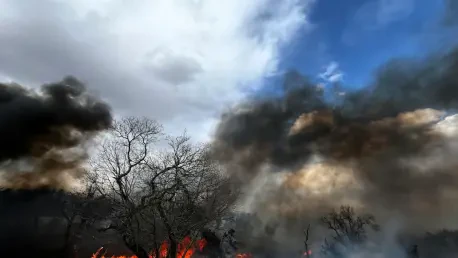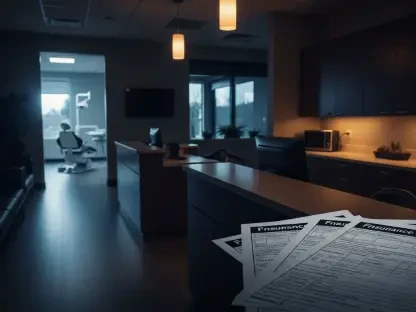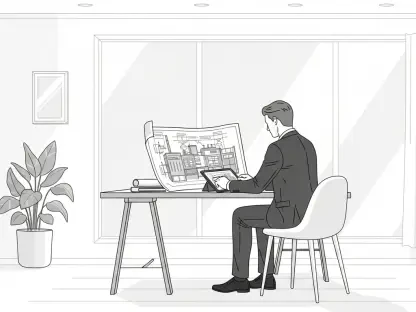Imagine a quiet manufacturing facility in Faribault, Minnesota, suddenly engulfed in flames due to a piece of equipment meant to streamline operations, leading to significant financial loss. On February 9, 2024, a fire at Trystar’s plant, traced to a CET Color UV flatbed printer, caused damages exceeding $350,000, prompting Federal Insurance to file a lawsuit against the Georgia-based manufacturer. This high-stakes legal battle has captured attention across the insurance and manufacturing sectors, raising pressing questions about equipment safety and accountability. This roundup gathers insights from industry professionals, legal analysts, and safety experts to explore the nuances of this case, compare differing perspectives on liability, and highlight lessons for stakeholders. The goal is to provide a comprehensive look at what this dispute means for product safety standards and risk management.
Diverse Perspectives on the Printer Fire Dispute
Equipment Safety Concerns: Is Manufacturer Oversight to Blame?
Insights from industrial safety consultants suggest that the core issue in this lawsuit revolves around alleged design flaws in the CET Color Q5-1000 UV flatbed printer. Many argue that the absence of basic safety features, such as fuses, could have directly contributed to the fire that started in the control panel. This perspective emphasizes a need for manufacturers to prioritize rigorous testing before equipment reaches the market.
On the other hand, some manufacturing industry voices caution against premature conclusions. They note that equipment failures can stem from a variety of factors, including improper maintenance or user error, which may not yet be fully explored in this ongoing case. This viewpoint underscores the complexity of pinpointing responsibility without comprehensive evidence.
A third angle comes from equipment design specialists who stress that safety must be embedded at every stage of product development. They argue that if the allegations of inadequate design and testing hold true, this incident could serve as a wake-up call for stricter internal protocols among manufacturers to prevent similar disasters.
Legal Angles: Negligence or Strict Liability?
Legal analysts weighing in on Federal Insurance’s claims highlight the insurer’s multi-pronged approach, which includes accusations of negligence and strict product liability under Minnesota law. Several experts believe that the strict liability argument—holding manufacturers accountable regardless of intent—could set a significant precedent if the court rules in the insurer’s favor. This might reshape how defective equipment cases are litigated.
Conversely, some legal commentators point out that proving negligence or design flaws is often challenging without clear evidence of foreseeability. They suggest that CET Color could counter by demonstrating compliance with industry standards at the time of production, potentially shifting some responsibility away from the manufacturer.
Another perspective focuses on the breaches of implied warranties claimed in the lawsuit. Legal professionals note that if the printer was indeed unfit for printing on metal—a key function in Trystar’s operations—this could strengthen Federal Insurance’s case. However, they also warn that unproven allegations leave room for a robust defense, keeping the outcome uncertain.
Insurance Industry Implications: Subrogation in Focus
Insurance sector opinions reveal a growing reliance on subrogation as a tool to recover losses, as seen in Federal Insurance’s pursuit of over $350,000 from CET Color after compensating Trystar. Many industry leaders view this as a standard practice to mitigate financial exposure, especially in high-cost claims involving commercial property.
A differing stance comes from risk management consultants who argue that this case exposes gaps in how insurers assess risks tied to manufacturing equipment. They contend that current underwriting practices may not fully account for the potential fallout from defective machinery, suggesting a need for more tailored policies.
Additionally, some insurance analysts highlight the broader impact on premiums and coverage terms. If subrogation efforts like this become more common, they predict that insurers might push for stricter safety certifications before covering certain industrial tools, potentially shifting costs and responsibilities back to manufacturers and clients.
Manufacturer Accountability: Calls for Stronger Standards
Safety advocates within the manufacturing realm use this lawsuit as a lens to examine systemic issues in product accountability. Many assert that incidents like the Trystar fire reflect a broader lack of enforceable safety benchmarks, urging regulators to impose tougher guidelines on equipment production.
In contrast, some industry representatives argue that existing standards are often sufficient, but compliance varies widely. They suggest that the focus should be on enhancing oversight and enforcement rather than creating new rules, which could burden smaller manufacturers disproportionately.
A balanced view from policy experts proposes that a potential ruling against CET Color might catalyze voluntary improvements in safety practices. They believe that manufacturers could preempt future litigation by adopting more proactive testing measures, even if regulatory changes lag behind, fostering a culture of prevention over reaction.
Key Takeaways from Industry Insights
Reflecting on the varied opinions surrounding Federal Insurance’s legal action against CET Color, it becomes clear that this case touches on critical intersections of safety, law, and financial risk. Industry professionals and analysts largely agree on the importance of robust equipment design, though they differ on whether the burden lies solely with manufacturers or extends to users and insurers. Legal perspectives highlight the potential for precedent-setting outcomes, while insurance voices underscore subrogation’s role in loss recovery.
Looking back, the discussions also reveal a shared concern about the adequacy of current safety and risk assessment frameworks. As this lawsuit unfolds, it prompts deeper conversations about accountability and prevention. For stakeholders, the next steps involve staying informed on the case’s progression, advocating for enhanced safety protocols, and exploring collaborative solutions between insurers, manufacturers, and regulators to address vulnerabilities. This dispute serves as a reminder that proactive measures today can avert costly crises tomorrow.









